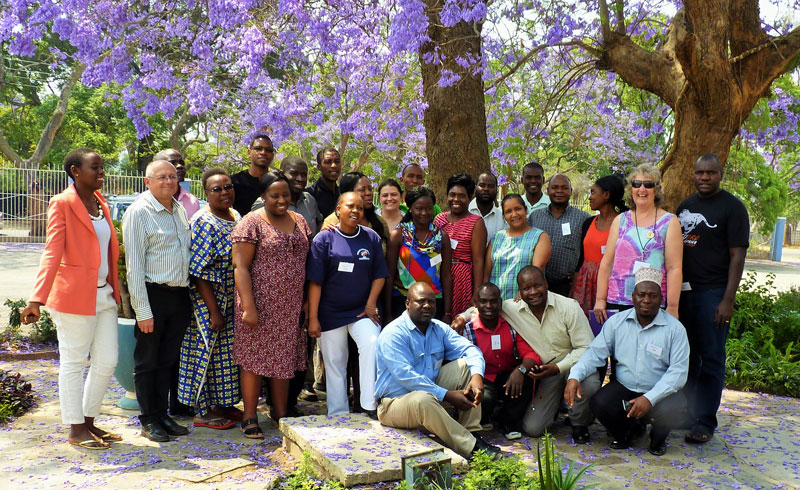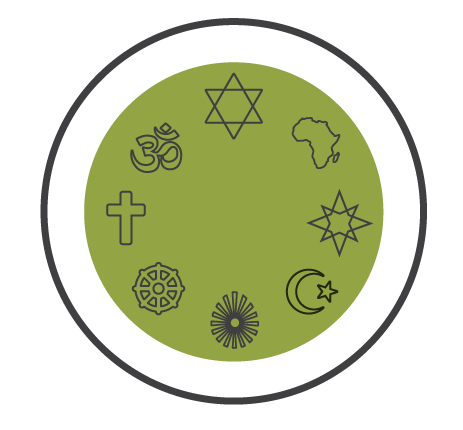Hindu Inspirations
- Published:
This picture perfectly illustrates the Hindu philosophy of the one-ness of life, sacred interconnectedness. Hinduism is regarded by many as the oldest religion in the world, and so during this Season of Creation we explore some ancient earth wisdom from the Hindu tradition.
Hindu children are taught a story that Sri Ramakrishna used to tell, about Ganesha and the Cat. Once, when Ganesha was small, he beat a female cat with a stick. The cat was bleeding and hurt. Later, Ganesha came to his mother, Mother Parvati, and saw that there were marks of beating all over her body. She was bruised and bleeding. Ganesha was shocked. “Mother, who has beaten you?” he enquired. She answered: “My child, it is you who has beaten me.” Ganesha was horrified and speechless. He did not remember – he would never – it was surely not possible? Mother Parvati said “My child, have you beaten any creature today?” Ganesha remembered the cat, and said so. Mother Parvati answered: “My child, you have in fact beaten me. I am present in all beings and creatures in the world.” That is when Ganesha finally understood that he must love and respect all beings equally.
Hinduism refers to the soul as “Atman”; it does not see any difference between my soul and yours because all of life is equal and interconnected, each form an extension of life in a continuous and eternal series of cycles of existence through various forms. Humans should strive to be and do the best they can in order to store up good karma, thereby ensuring a favourable incarnation next time. Westerners tend to think of karma as being related to human interactions, but because all souls are equal in Hindu thought, respect and compassion towards all of life is an essential practice. Kindness to plants and animals adds to the store of good karma.
Humankind would naturally take good care of the environment because that is how we take good care of self. Divinity is everywhere, in everything and a practicing Hindu aspires to samadhi, oneness with all of it, through sacred practice and meditation.
The Hindu Law of Ahimsa, non violence, is a beautiful point of reflection as it pertains to the human condition and humanity’s relationship with animals and nature. Treat all beings with respect. This Law is applied equally to the natural world – the ocean, mountains, plants and rivers.
Right conduct and social order are amongst the basic principles of Hinduism. How can we claim right behaviour if we damage the earth or do harm to any part of our environment? To hurt the earth is to hurt oneself.
Hindu Poetry and Prayer
Prayer to Mother Earth for Grace
“Earth in which the seas, the rivers and many waters lie, from which arise foods and fields of grain, abode to all that breathes and moves, may She confer on us Her finest yield.”
— Bhumi Suktam, Atharva Veda xii.1.3
The Fragrance
The wind was cold, the sun was shining
In the rear view I could see
Wind blowing up the flowers
And sunlight falling on them
He held my hand
I was holding on to my dreams
He said he wanted to smell those flowers
I looked at him just like the flowers did and said,
“You should know that you can smell a flower’s fragrance without plucking it”.
- Kritika Vashist
- Source: Hindu Declaration on Climate Change
Who we are

SAFCEI (Southern African Faith Communities’ Environment Institute) is a multi-faith organisation committed to supporting faith leaders and their communities in Southern Africa to increase awareness, understanding and action on eco-justice, sustainable living and climate change.
Featured Articles
-

South Africa: Who Ends Up Paying If DMRE Cooks the Price of Nuclear Power?
-

South Africa’s nuclear energy expansion plans continue to draw criticism, environmental NGOs chew over legal challenge
-

Earthlife Africa and SAFCEI respond to latest unsettling nuclear news regarding the ministerial determination
-

Open Wing Alliance Africa (Virtual) Summit 2023
-

The Green Connection and SAFCEI respond to energy minister's divisive and deflecting comments
-

Job Vacancy: FLEAT Coordinator







